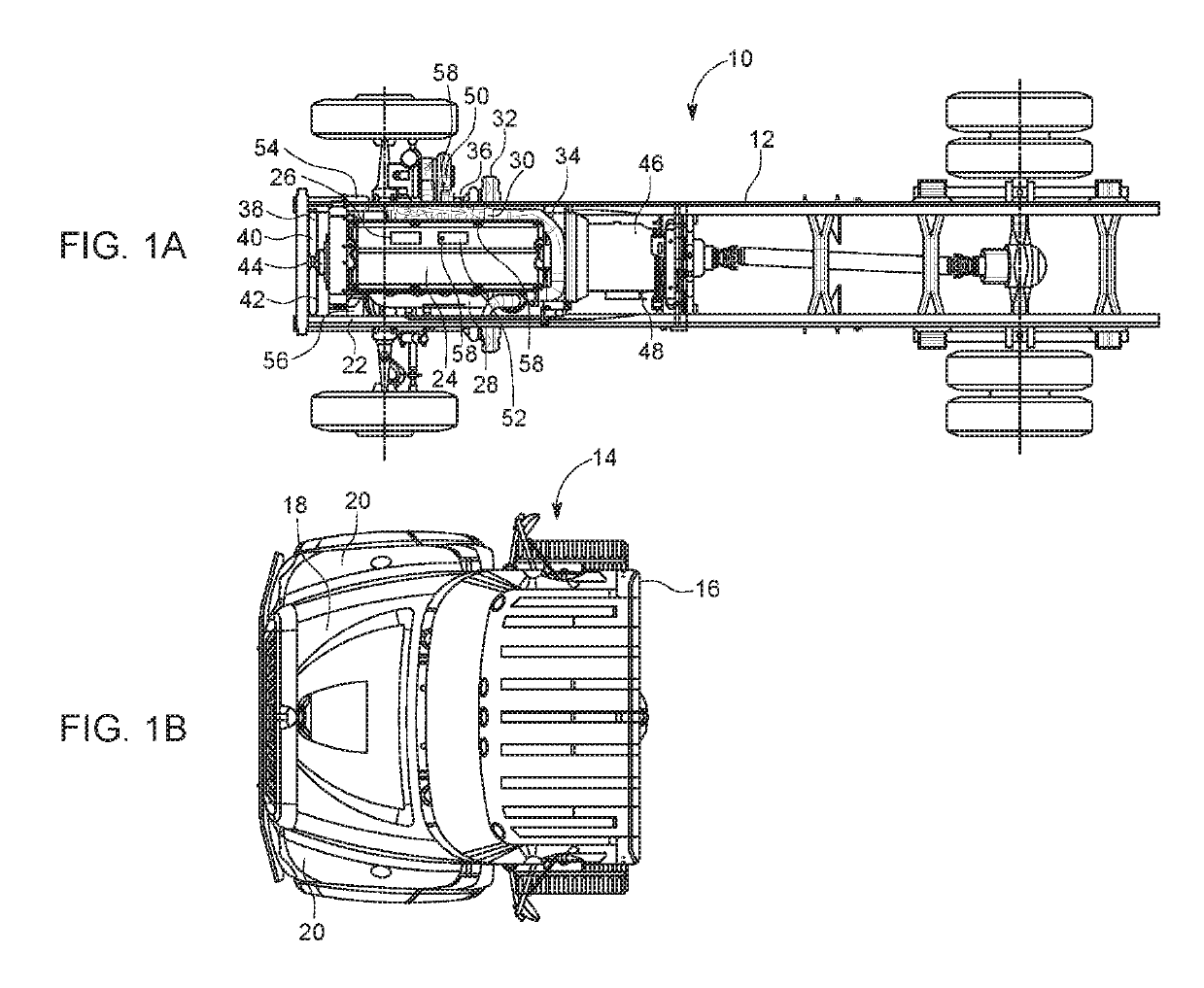Hardware protection mode in high ambient temperature after stationary operation
a technology of high ambient temperature and protection mode, which is applied in the direction of engine starters, electric control, speed sensing governors, etc., can solve the problems of high under hood temperature, certain vehicle and engine components to exceed their temperature limits, and heat from the air conditioning condenser may continue to reject heat to the under hood environment, etc., to increase the operating temperature of the engine, increase the individual component temperature, and increase the effect of coolant temperatur
- Summary
- Abstract
- Description
- Claims
- Application Information
AI Technical Summary
Benefits of technology
Problems solved by technology
Method used
Image
Examples
Embodiment Construction
[0018]Referring now to FIG. 1A, a plan view of a vehicle chassis assembly 10 having an embodiment of a system and method for dissipating vehicle under hood heat accumulated during stationary engine operation at high load or revolutions per minute (RPM), increased engine operating temperature, increased individual component temperature, increased coolant temperature, and / or under high temperature ambient conditions is shown. The vehicle chassis assembly 10 has a chassis 12 in which an engine 24 and transmission 46 are installed. A body 14 shown in FIG. 1B is attached to the chassis 12, defining a vehicle (not shown) and includes a cabin 16, a hood 18, and fenders 20. The hood 18, the fenders 20, and the forward part of the cabin 16 together form an engine compartment 22 that shelters the engine 24 from the environment and helps to guide airflow over the engine 24. The engine 24 is provided with an air intake system 28 that guides ambient air through a turbocharger 32 into the engine ...
PUM
 Login to View More
Login to View More Abstract
Description
Claims
Application Information
 Login to View More
Login to View More - R&D
- Intellectual Property
- Life Sciences
- Materials
- Tech Scout
- Unparalleled Data Quality
- Higher Quality Content
- 60% Fewer Hallucinations
Browse by: Latest US Patents, China's latest patents, Technical Efficacy Thesaurus, Application Domain, Technology Topic, Popular Technical Reports.
© 2025 PatSnap. All rights reserved.Legal|Privacy policy|Modern Slavery Act Transparency Statement|Sitemap|About US| Contact US: help@patsnap.com


